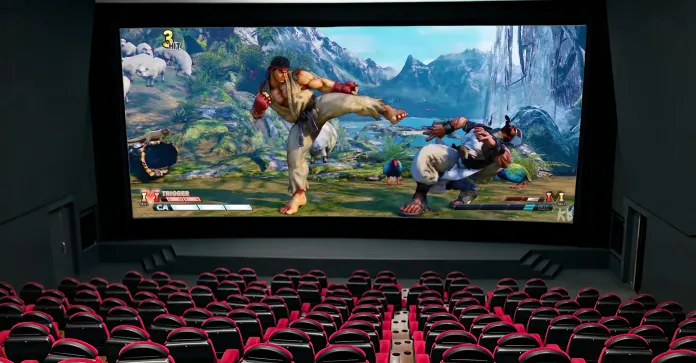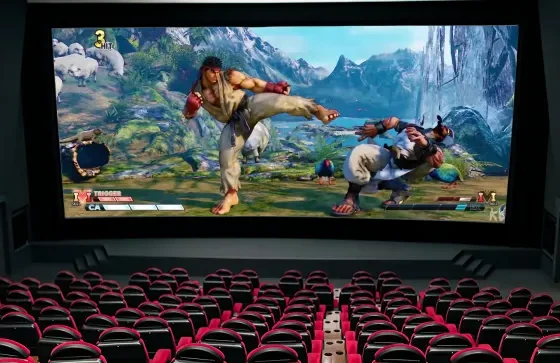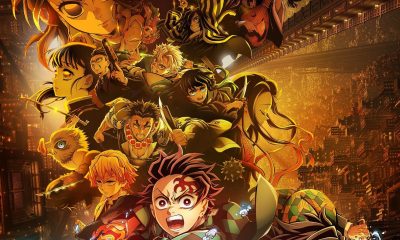

Movie Reviews
When Cinema Meets Gaming: Storytelling in the Age of Entertainment-First Experiences
From the Silver Screen to the Digital Arena
Cinema has always been the ultimate storytelling medium – a place where art, emotion, and imagination collide. From the sweeping landscapes of Lawrence of Arabia to the futuristic cityscapes of Blade Runner 2049, filmmakers have long mastered the art of immersing audiences in vivid, emotional worlds. But in today’s rapidly evolving entertainment landscape, storytelling is no longer confined to the big screen.
Interactive and digital media have begun to reshape how audiences engage with stories. Viewers are now participants, not just spectators. The same narrative power once reserved for directors and screenwriters has moved into the hands of game designers and digital creators. The result? A new form of cinematic storytelling that unfolds not just in theatres, but across devices, consoles, and immersive platforms.
Much like the movies we love, today’s digital entertainment thrives on emotion, world-building, and visual flair. It’s no coincidence that the storytelling techniques of cinema – pacing, character development, and atmosphere – are finding their way into gaming. This convergence marks a cultural turning point, transforming entertainment into a truly interactive experience.
The Rise of Entertainment-First Worlds
In this new landscape, audiences crave experiences that blend the thrill of gaming with the narrative richness of film. The most successful modern platforms go beyond simple gameplay mechanics – they create entire worlds built around story, aesthetics, and emotional connection.
One standout example of this evolution is Highroller, the entertainment-first social gaming destination. Rather than focusing purely on competition or chance, Highroller emphasizes storytelling, visual design, and community engagement. It offers players an environment that feels as curated as a film set – colorful, dynamic, and rich with narrative cues that encourage exploration.
What sets this entertainment-first approach apart is how it captures the essence of cinema: immersion. Just as a great director uses camera angles and sound to evoke emotion, Highroller uses visual design, thematic depth, and social interaction to pull players into its world. Every experience feels like stepping into a scene – part story, part spectacle, and wholly entertaining.
For film enthusiasts and digital natives alike, this kind of hybrid storytelling represents the next chapter in modern entertainment. It’s not just gaming; it’s interactive storytelling shaped by cinematic influence.
Crafting Immersion: The Language of Interactive Storytelling
The artistry behind both great films and great games lies in their ability to make audiences feel. Cinematography, pacing, and visual composition are tools filmmakers use to direct emotion – and game designers now employ them just as skillfully. The result is a shared creative language that spans both mediums.
Games like The Last of Us and Red Dead Redemption 2 have already proven that interactive storytelling can rival cinema in emotional depth. Likewise, entertainment-first digital experiences are now borrowing film’s techniques to heighten immersion. They use lighting, color palettes, and music cues to influence mood, while pacing and narrative arcs guide players through structured emotional journeys.
This evolution mirrors the way cinema once transformed theatre – taking something familiar and reimagining it through new technology. Today, gaming is doing the same with storytelling. Platforms inspired by filmic design principles invite users to inhabit narratives, not just observe them. In these spaces, every choice, every visual, and every soundscape contributes to a sense of belonging inside a story.
What’s emerging is a fusion of artistry and interactivity – a future where the language of cinema informs the rhythm of play.
The Future of Storytelling in Digital Entertainment
As entertainment continues to evolve, the distinction between watching and participating will only grow blurrier. We are entering a cultural moment where games, films, and digital experiences share a common goal: to transport audiences into emotional, beautifully crafted worlds.
This shift represents more than just technological progress – it’s a philosophical change in how stories are told. Instead of one-way communication, audiences now engage in dialogue with creators, shaping narratives through their actions and decisions. It’s the logical next step for a generation raised on both Hollywood blockbusters and open-world adventures.
Platforms like Highroller exemplify this new era. Their emphasis on atmosphere, storytelling, and shared experiences reflects the same principles that make cinema timeless: connection, creativity, and emotion. By merging filmic inspiration with interactivity, they’re redefining what digital entertainment can be – not just play, but performance; not just interaction, but immersion.
For Movie Marker readers, this evolution is an exciting frontier. It signals a world where cinematic storytelling no longer ends when the credits roll -it continues, reshaped by technology, community, and imagination. The next great stories won’t just be watched; they’ll be lived.
-

 Interviews4 weeks ago
Interviews4 weeks agoUp Close with Frank Cappello
-

 Interviews3 weeks ago
Interviews3 weeks agoInterview With Director Sophie Dupuis/Actor Felix Maritaud (Solo)
-

 News4 weeks ago
News4 weeks agoIris Prize LGBTQ+ Film Festival Launches 2025 Programme
-

 News2 weeks ago
News2 weeks agoBolton International Film Festival Set To Return For 9th Edition
-

 Featured Review4 weeks ago
Featured Review4 weeks agoIslands ★★★★
-

 Movie Reviews3 weeks ago
Movie Reviews3 weeks agoQueen Of The Ring ★★★
-

 Featured Review3 weeks ago
Featured Review3 weeks agoDemon Slayer: Kimetsu No Yaiba – The Movie: Infinity Castle ★★★★★
-

 Featured Review3 days ago
Featured Review3 days agoThe Smashing Machine ★★★

